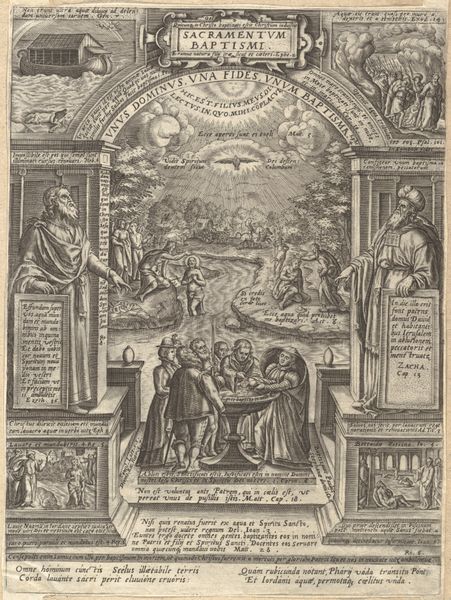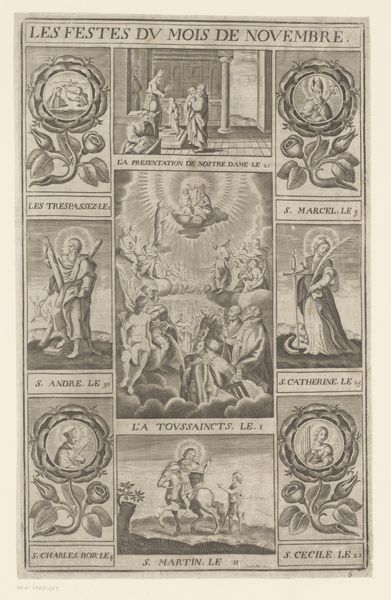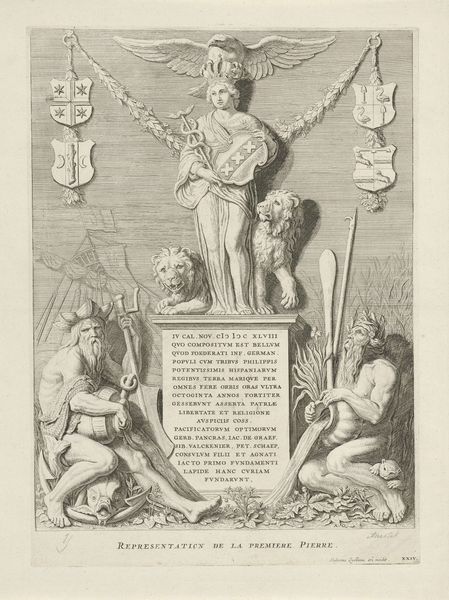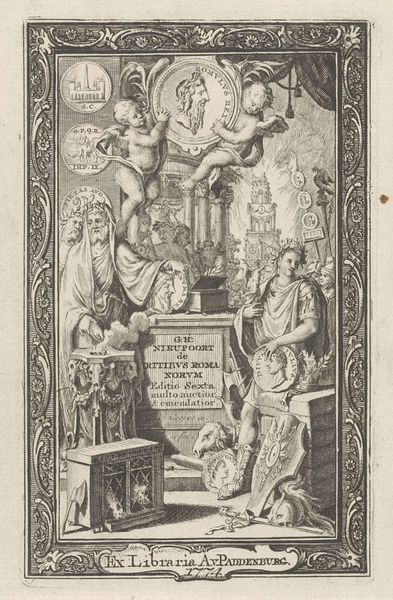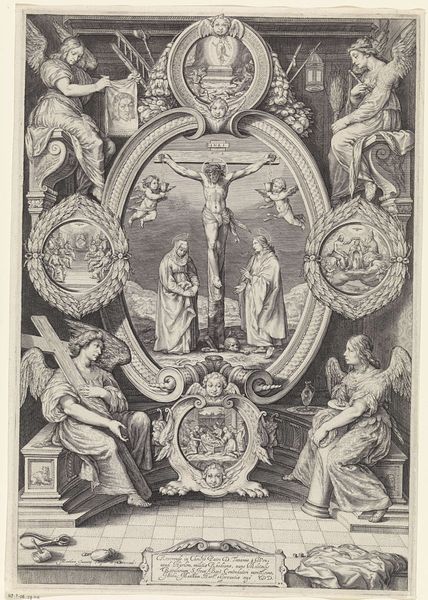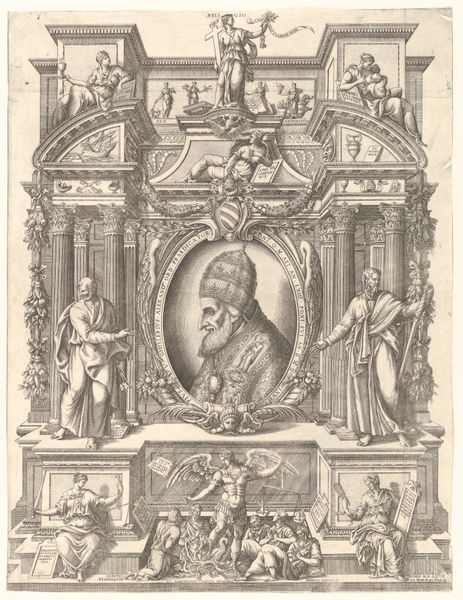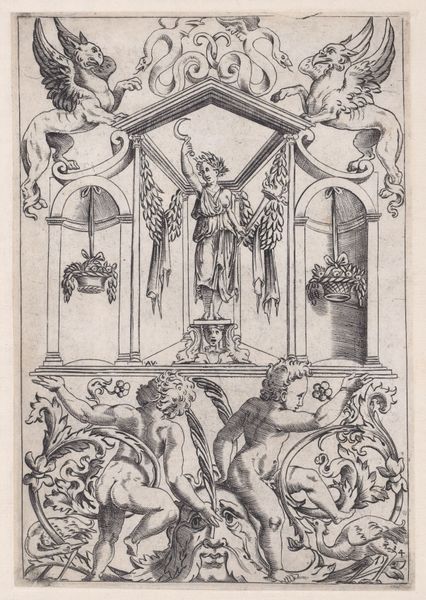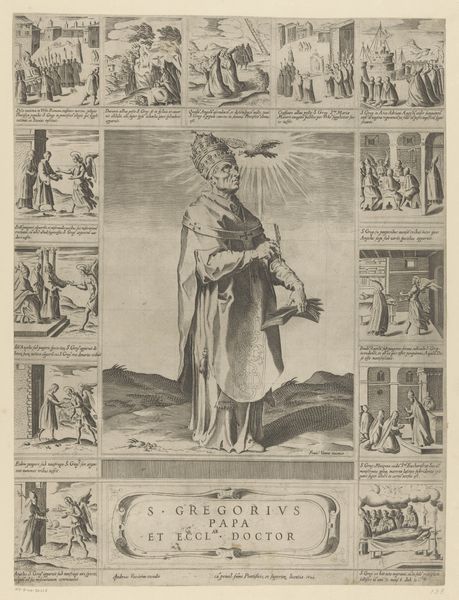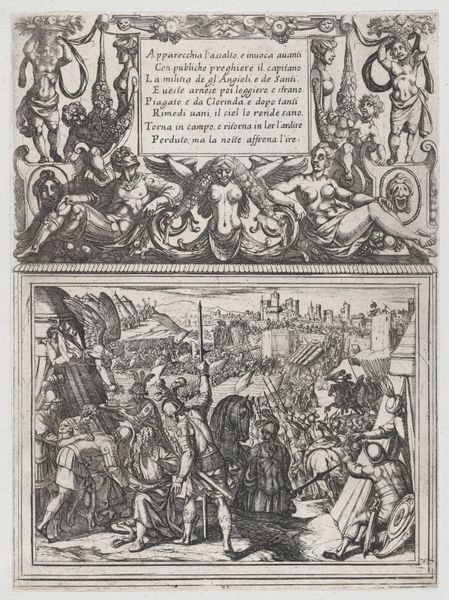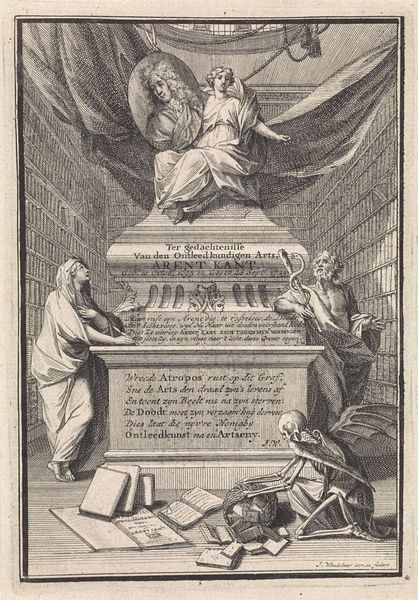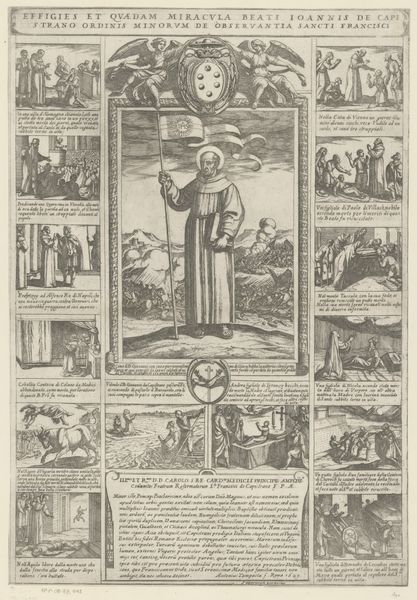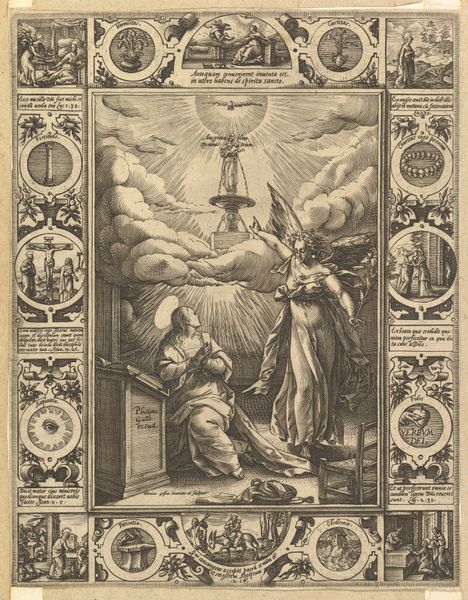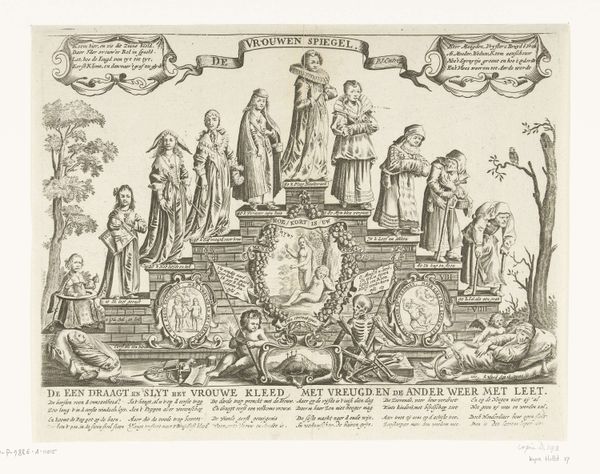
Decoration for a Thesis in Honor of Saint Francis Solano in two parts: the top part with Saint Francis Solano with his arms raised and a sun in his hands with Mount Potosí at right, the lower part with the doctor of the church holding a banner and two putti below 1639
0:00
0:00
drawing, print, engraving
#
drawing
#
baroque
# print
#
history-painting
#
engraving
Dimensions: Sheet (Top): 10 7/16 × 14 5/8 in. (26.5 × 37.1 cm) Sheet (Bottom): 9 3/4 × 14 1/2 in. (24.7 × 36.9 cm)
Copyright: Public Domain
Editor: So, this is "Decoration for a Thesis in Honor of Saint Francis Solano," an engraving and print from 1639 by Stefano della Bella, currently held at the Met. It's separated into two distinct sections, and is absolutely covered in tiny text. Honestly, I'm a bit overwhelmed. How do you even begin to unpack something this visually dense? Curator: Indeed, the intricacy is remarkable. Observe first the bipartite structure. Two distinct but interconnected spaces are delineated by their composition. In the upper register, we see dynamic, sweeping curves, cherubic figures, and an emphasis on light emanating from Saint Francis's sun. Descend to the lower register, and the composition shifts. Columns frame a more rigid space. How do these formal contrasts strike you? Editor: The contrast is strong. The top feels very heavenly and free, while the bottom seems much more earthly, bound by the architecture and those columns. The figure in each register echoes those feelings. The saint gestures wildly in the upper part, and gently presents a banner in the lower section. What would you say those contrasts tell us about the work? Curator: Note that in both compositions text plays a prominent role, with nearly symmetrical placement within their distinct frameworks. We are confronted with an opposition of free and confined and an alignment of the textual within those spaces. Does this assist in mediating how we view the saint? How meaning itself takes up space in both registers, but is understood differently given their architectural context? Editor: So, it's not just about the saint, but how the very structure of the work itself contributes to our understanding. The framework is not simply a backdrop. By contrasting movement versus stillness in relation to heavenly and earthly connotations, it adds to a deeper reading. Curator: Precisely. A formal reading directs us toward interpreting the deeper meaning through visual relationships. Through the binary contrasts, the image guides us to the significance of these spatial and physical relationships as primary vehicles of meaning. Editor: I hadn't thought about analyzing it that way, breaking it down by form, and letting the piece tell me what to make of it. Thank you. Curator: My pleasure. Remember to trust in what is observable in front of you, and consider it carefully, so to interpret that which lies deeper than initial understanding.
Comments
No comments
Be the first to comment and join the conversation on the ultimate creative platform.
